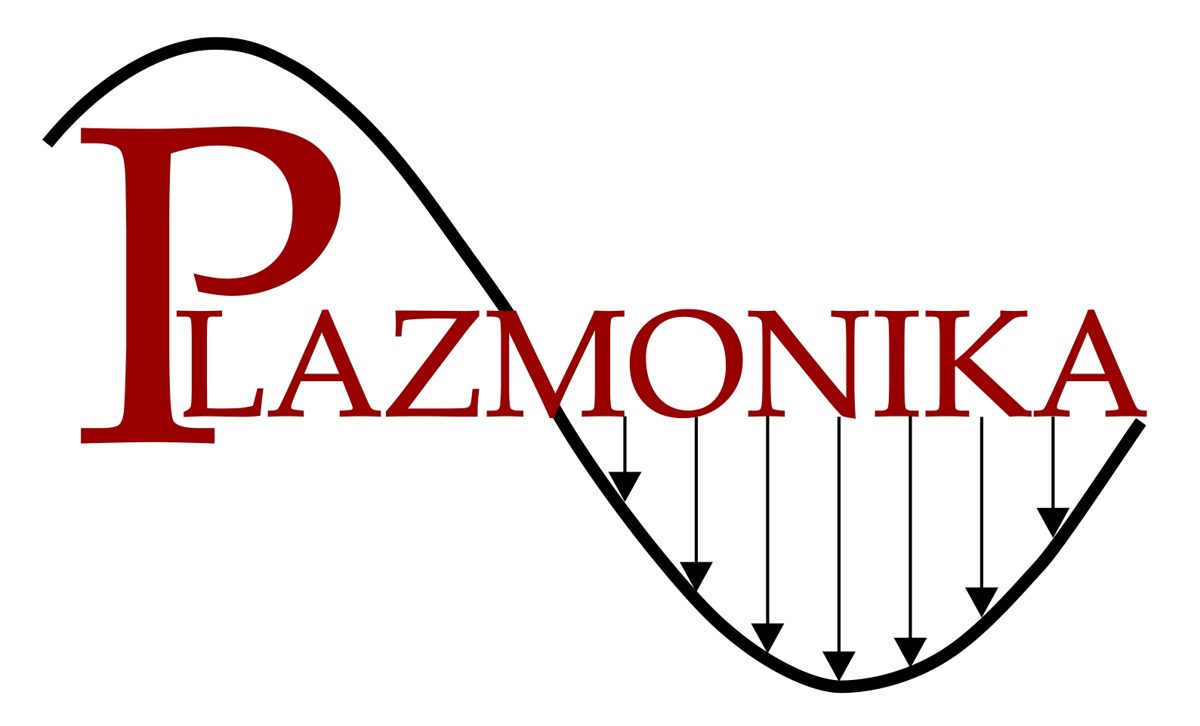BESSEL-LIKE BEAM GENERATOR (Code BE-01)
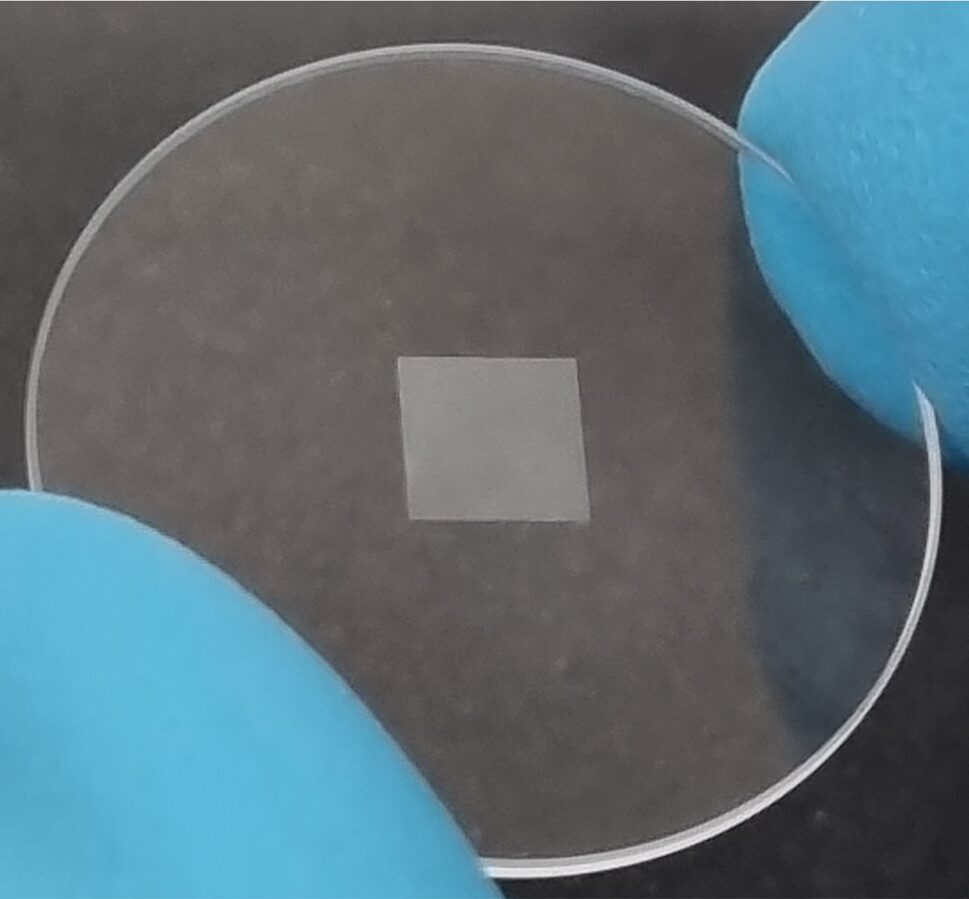
SPECIFICATIONS
| Substrate Material: | Glass |
| Substrate Diameter: | 25.4 mm |
| Active Area: | 5x5 mm2 |
| Active Area Material: | SZ2080 |
| Period between Structures: | ~60 µm |
| Diameter of Structures: | ~20 µm |
| Height of Structures: | ~8 µm |
| Initial Spot Size: | ~5 µm |
| Focal Length: | ~220 µm |
| Depth of Focus: | ~70 µm |
| Damage Threshold 1-on-1: | 1.04 ±0.62 J/cm2 |
| Damage Threshold 1000-on-1:
| 0.67 ±0.40 J/cm2 |
| Transmission >95%: | 550-2000 nm |
| Recommended Wavelength | 633 nm |
| Price | on request |
DESCRIPTION
Optical element generates Bessel-like beams array. The generated beams exhibit all the fundamental features of a Bessel-like beam: 1) the transverse intensity profile (black line) matches the Bessel beam transverse intensity distribution (red line):
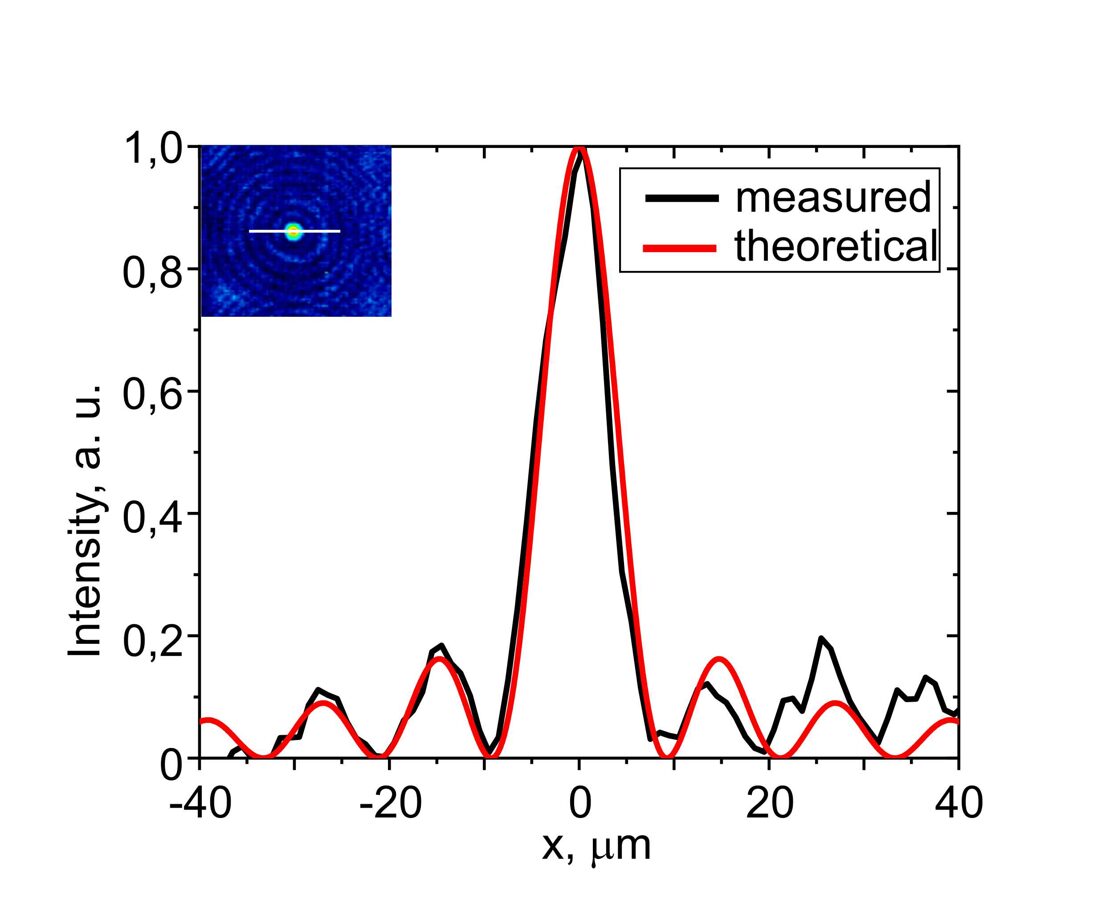
2) the axial divergence of the central beam (black line) is significantly lower than that of the Gaussian beam with the same initial waist size (red line):
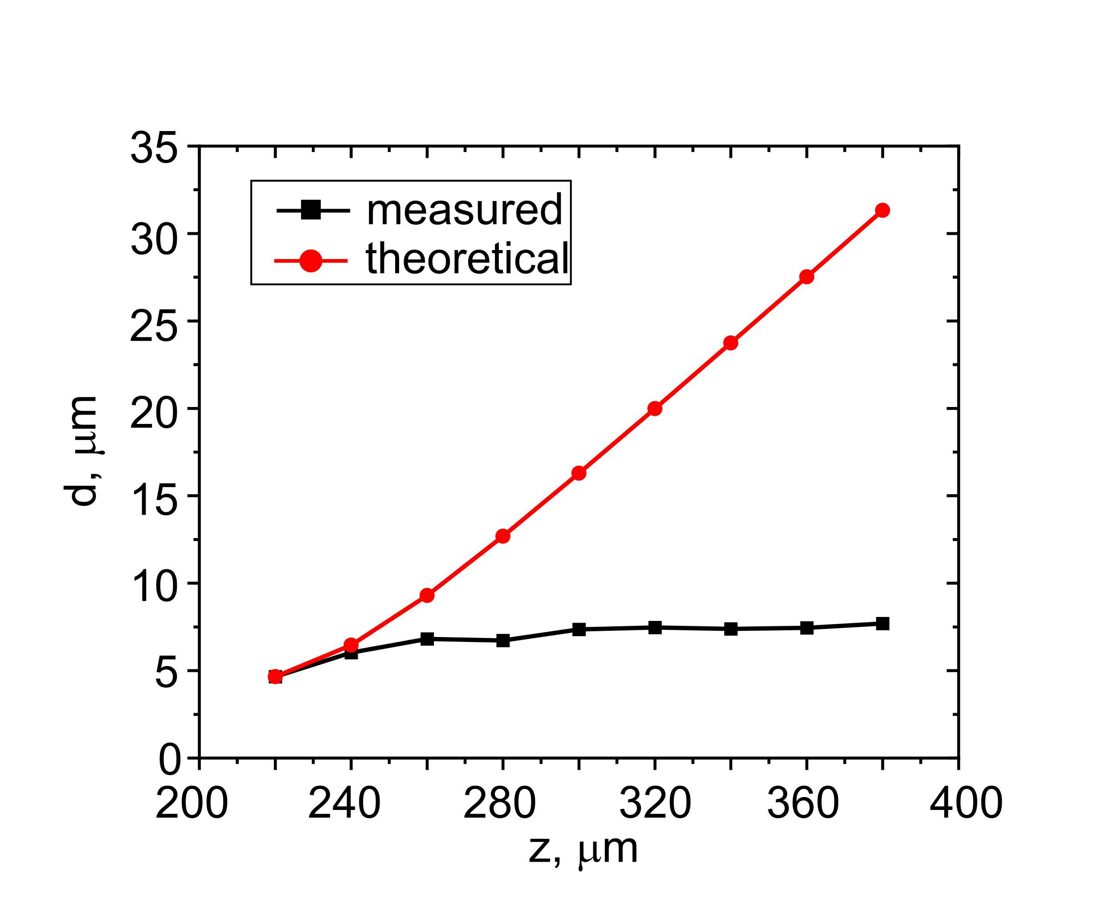
SEM MICROGRAPHS OF STRUCTURES
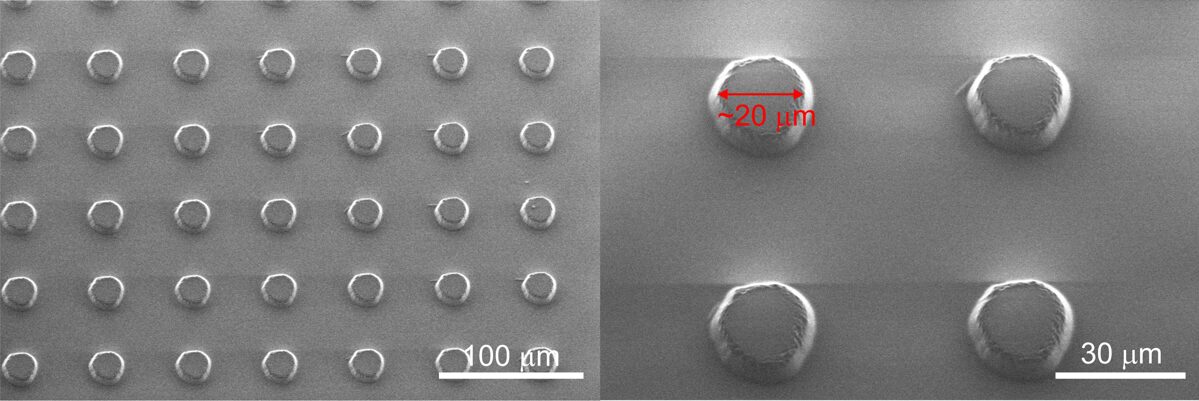
BEAM PROPAGATION
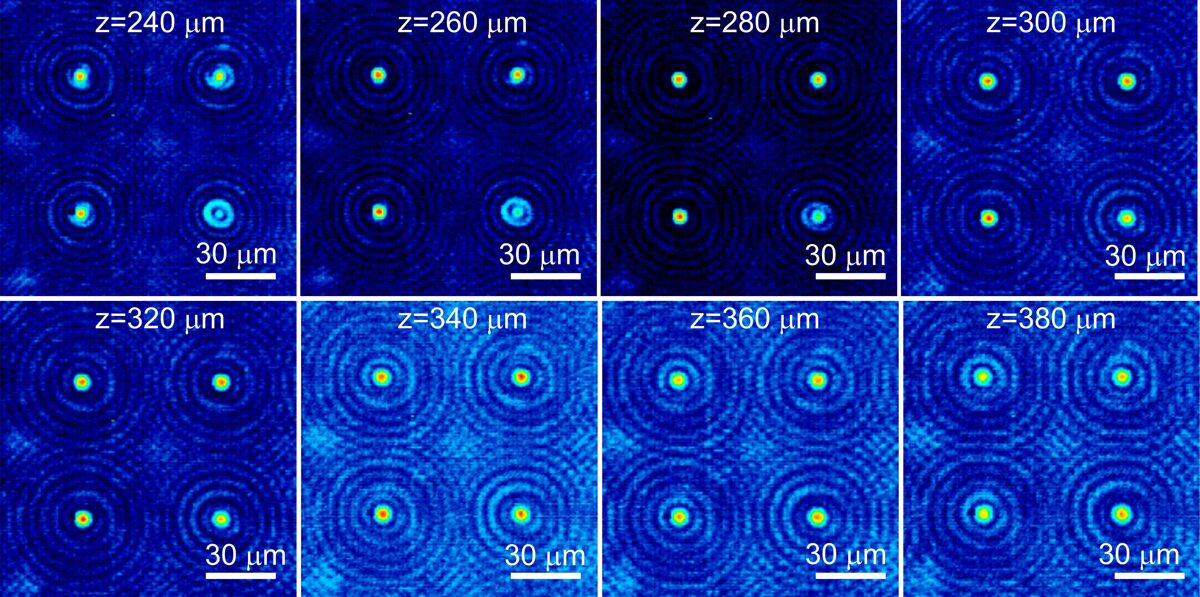
TRANSMISSION SPECTRA OF SZ2080
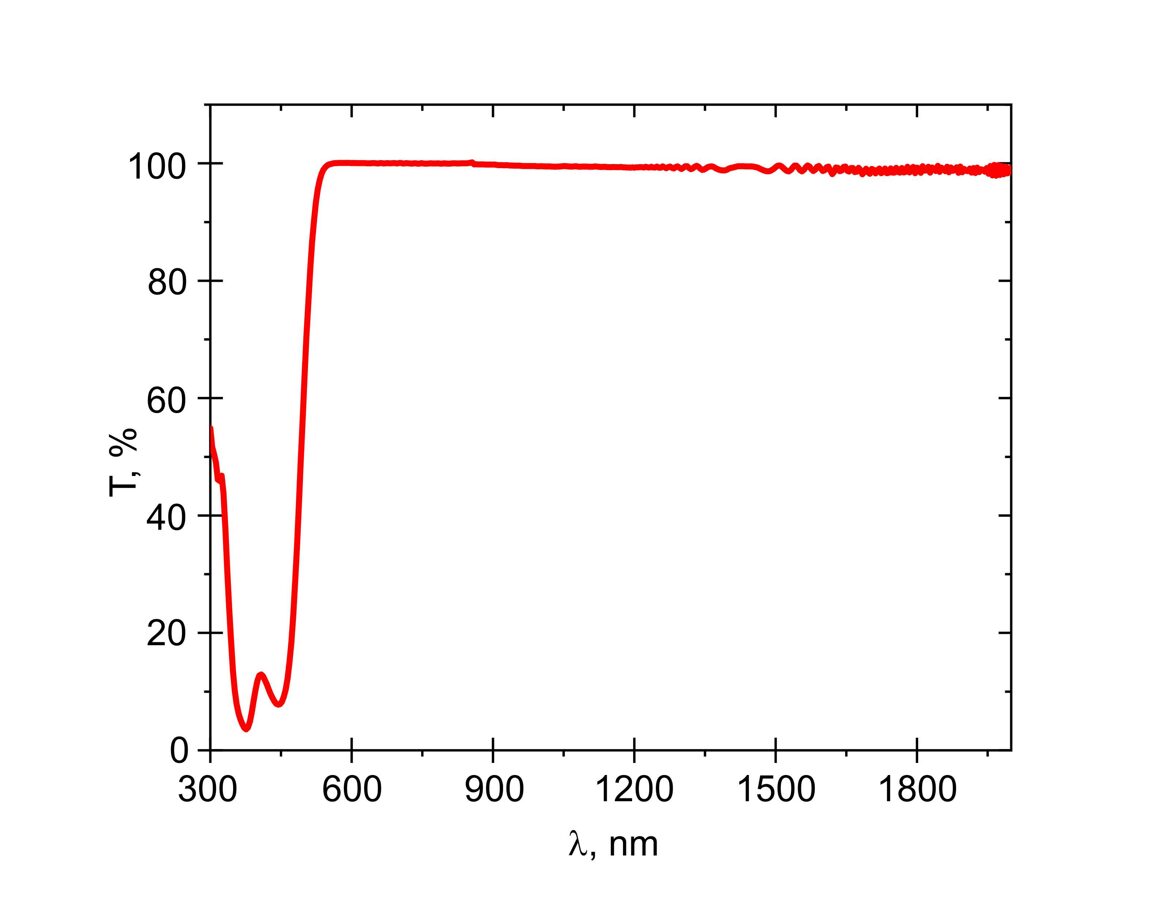
APPLICATIONS
Optical elements were tested in imaging applications. "CP" letters were taken using optical element consisting of polymeric structures generating Bessel-like beams.
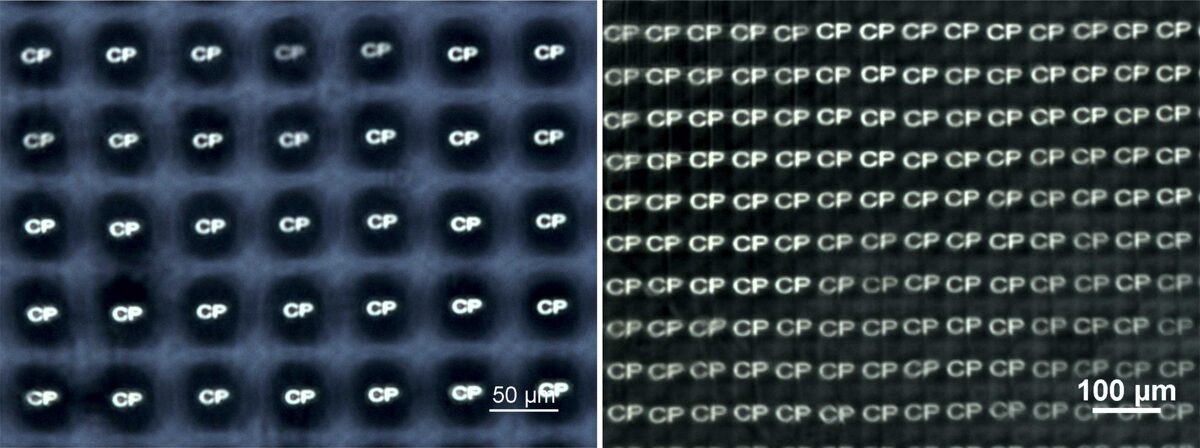
Optical elements were tested in laser microfabrication. The example of the fabricated ring-shape structures containing gold nanoparticles. Such structures can be used in Raman spectroscopy.
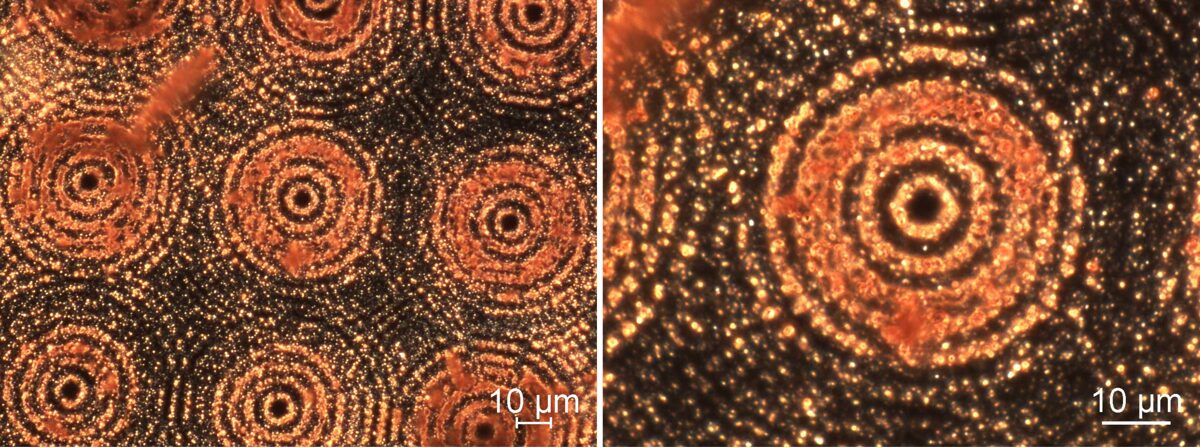
PRINCIPLES OF BESSEL-Like BEAM GENERATION
Bessel-like beams were generated using polymeric structures having significant spherical aberrations. In this case, extended Bessel-zones are obtained compared to the case of cone-shaped axicons. The comparison of Bessel beam generation using the spherically-shaped structure and axicon is given below.
![]()
In spherically-shaped structures, the transversal spatial frequency in the Bessel zone is slightly varying with the axial position z. The variation of the spatial frequency of the Bessel-like fringe pattern means that the conical beam angle β is a function of the axial position z (β(z)), contrary to an “ideal” axicon (conical-shaped) where β is an invariant along the axial position z.
GAUSSIAN BEAM VS BESSEL BEAM
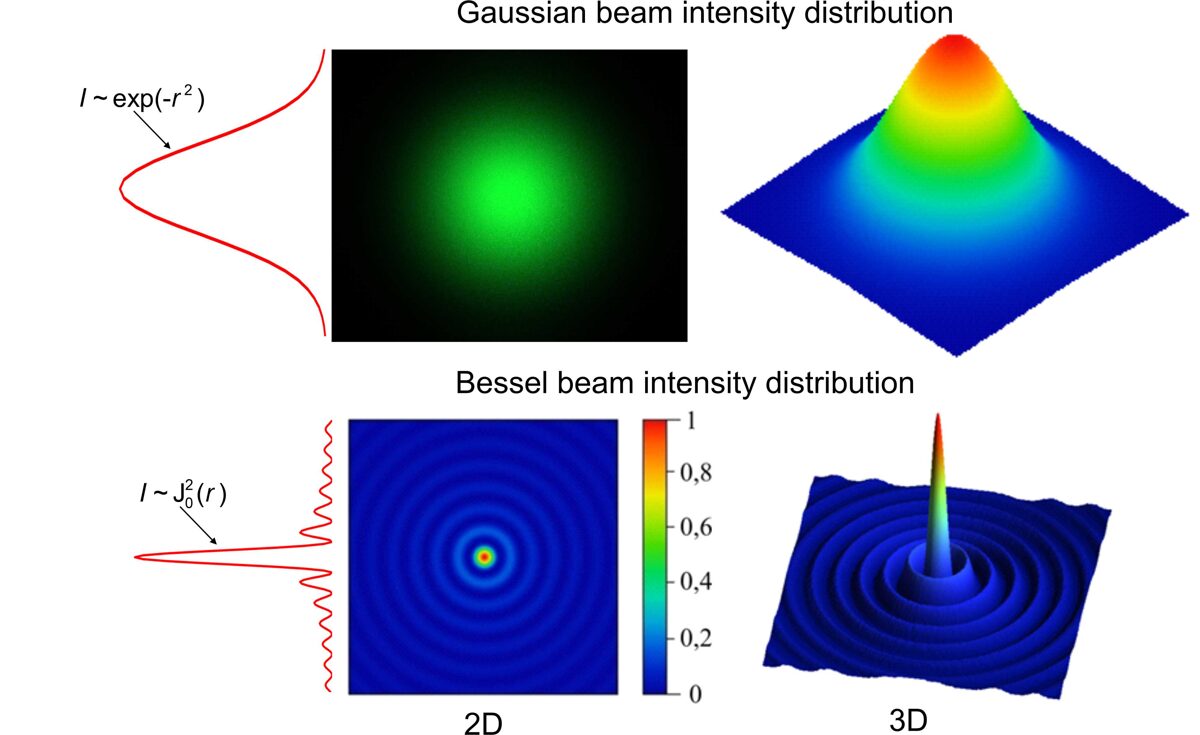
| Properties | Gaussian beam | Bessel beam |
| Propagation invariance | - | + |
| Self-reconstruction | - | + |
- Optical manipulation
- Fabrication of polymer microfibers
- Optical lithography
- Microscopy
- Cell transfection
- Virtual tips for near-field optics
- Optical pumping
- Laser drilling
- Imaging
- Atomic transport and trapping
- etc.
